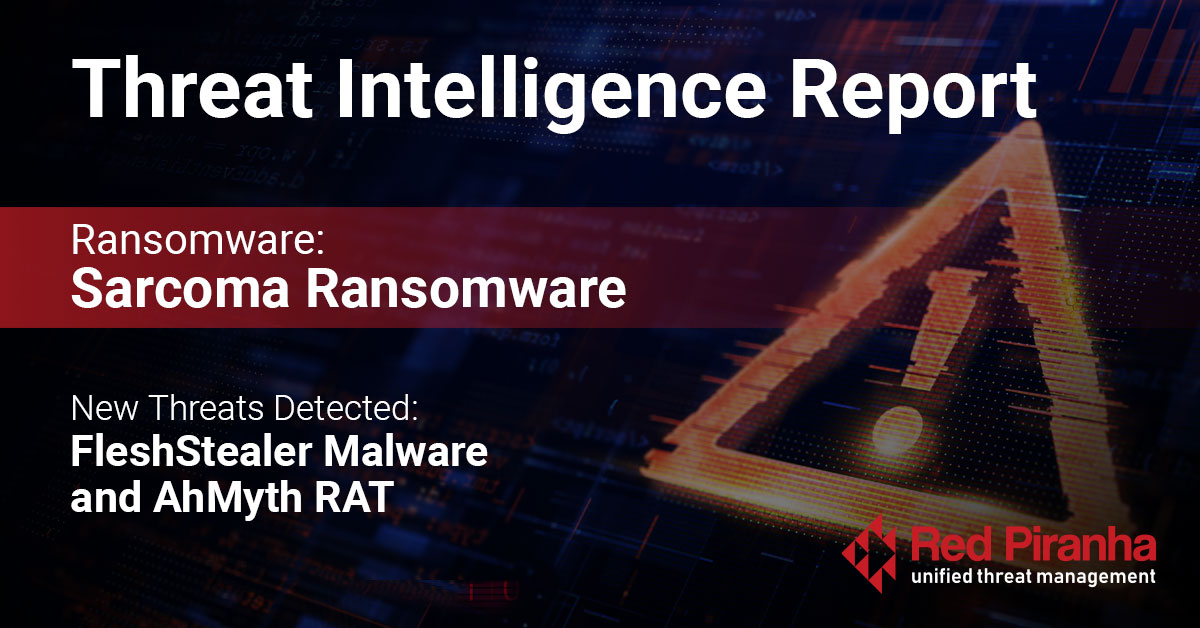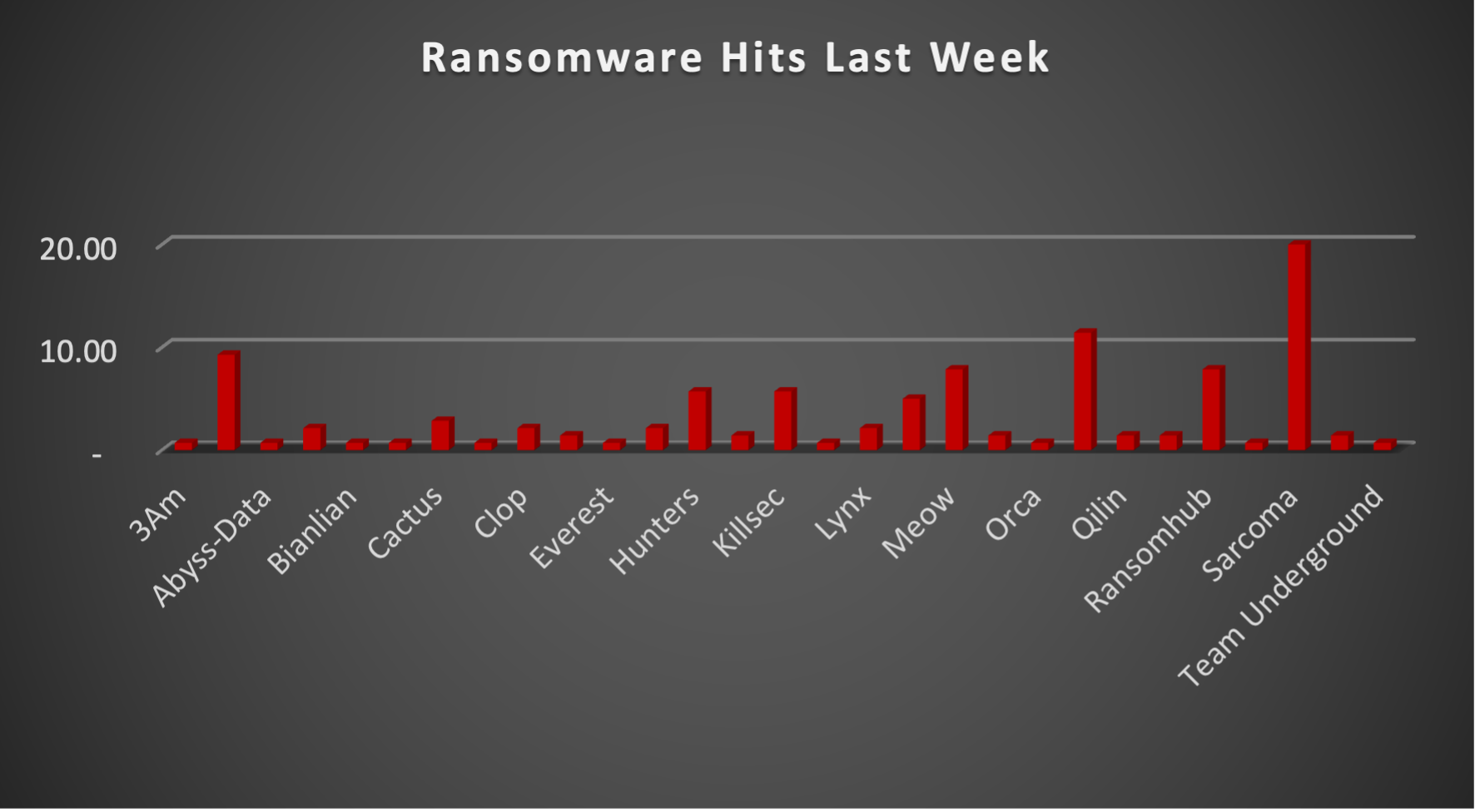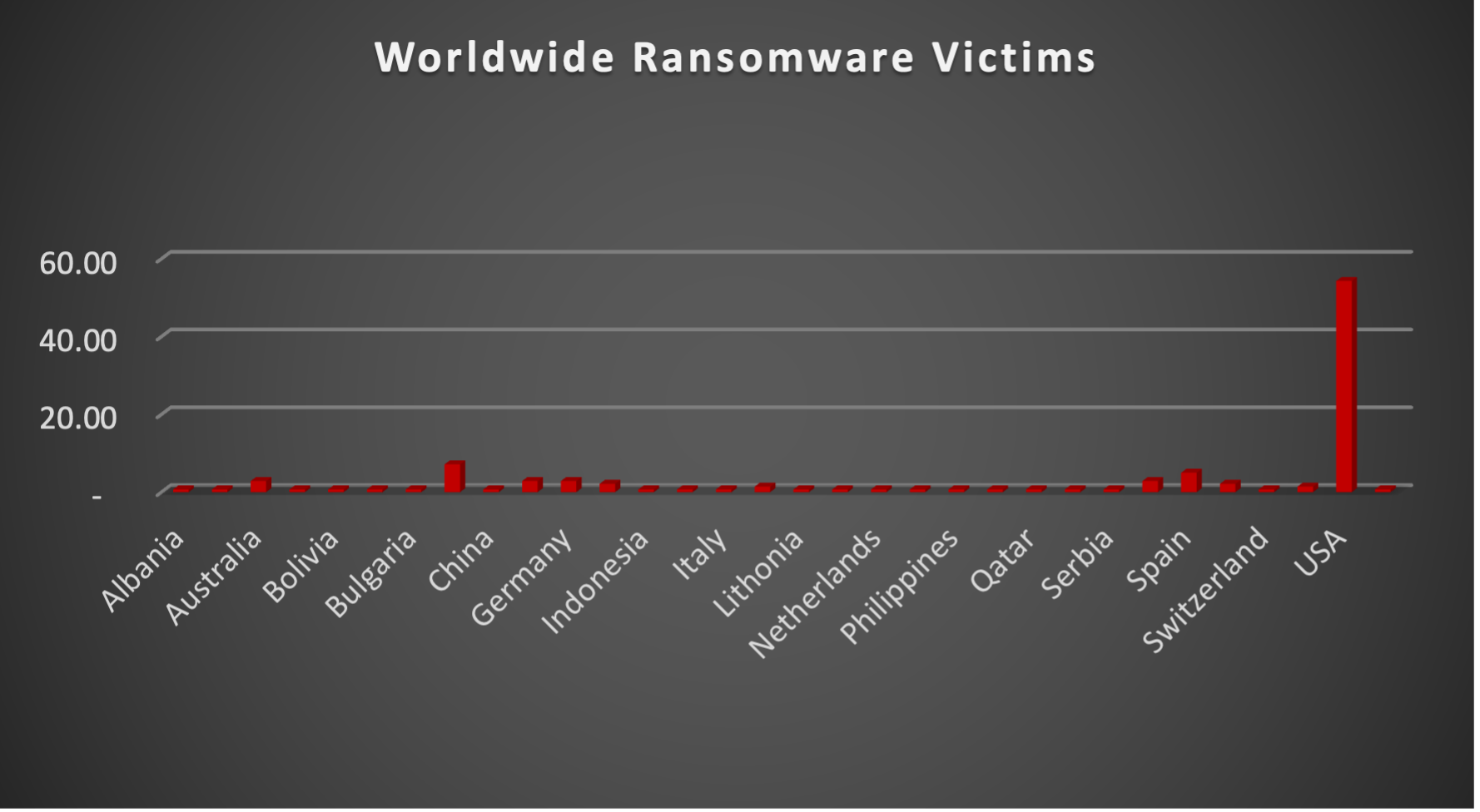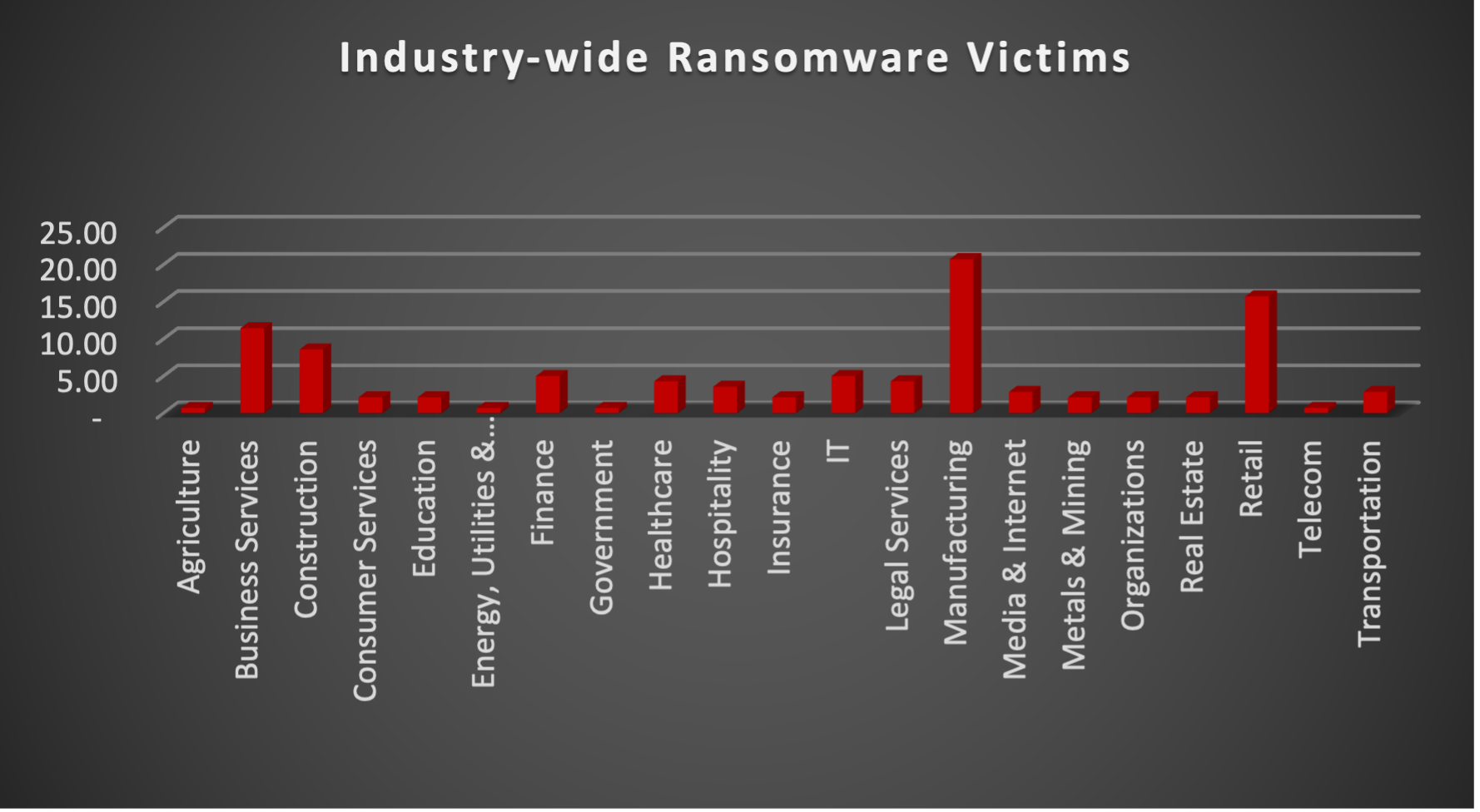
| New Threat Detection Added | 2 (FleshStealer Malware and AhMyth RAT) |
| New Threat Protections | 197 |
Weekly Detected Threats
The following threats were added to Crystal Eye XDR this week:
Threat name: | FleshStealer Malware | |||||||||||||||||||||||||||
FleshStealer is a potent information-stealing botnet that has emerged as a significant threat in the cyber landscape. This botnet leverages compromised devices to harvest sensitive data, including login credentials, credit card information, cryptocurrency wallet details, and personal files. FleshStealer's advanced capabilities, such as keylogging, screen capturing, and file exfiltration, make it a formidable tool for cybercriminals. Often distributed through phishing emails or malicious downloads, FleshStealer poses a significant risk to both individuals and organisations. | ||||||||||||||||||||||||||||
Threat Protected: | 01 | |||||||||||||||||||||||||||
Rule Set Type: |
| |||||||||||||||||||||||||||
Class Type: | Trojan-activity | |||||||||||||||||||||||||||
Kill Chain: |
| |||||||||||||||||||||||||||
Threat name: | AhMyth RAT | ||||||||||||||||||
AhMyth RAT is a sophisticated Remote Access Trojan (RAT) that has emerged as a significant threat in the cyber landscape. This malware grants attackers extensive control over compromised systems, enabling them to steal data, execute commands, and establish persistent backdoors. AhMyth's advanced features, including encryption and anti-analysis techniques, make it difficult to detect and mitigate. The malware has been linked to various cyberattacks targeting government, military, and critical infrastructure sectors. Its ability to evade detection, combined with its affiliation with a well-resourced threat actor, makes AhMyth a significant concern for organisations worldwide. | |||||||||||||||||||
Threat Protected: | 04 | ||||||||||||||||||
Rule Set Type: |
| ||||||||||||||||||
Class Type: | Trojan-activity | ||||||||||||||||||
Kill Chain: |
| ||||||||||||||||||
Known exploited vulnerabilities (Week 2 - October 2024)
Threat | CVSS | Description | |
CVE-2024-43573 | 8.1 (High) | Microsoft Windows MSHTML Platform Spoofing Vulnerability | |
CVE-2024-43572 | 7.8 (High) | Microsoft Windows Management Console Remote Code Execution Vulnerability | |
CVE-2024-43047 | 7.8 (High) | Qualcomm Multiple Chipsets Use-After-Free Vulnerability | |
CVE-2024-9380 | 7.2 (High) | Ivanti Cloud Services Appliance (CSA) OS Command Injection Vulnerability | |
CVE-2024-9379 | 7.2 (High) | Ivanti Cloud Services Appliance (CSA) SQL Injection Vulnerability | |
CVE-2024-23113 | 9.8 (Critical) | Fortinet Multiple Products Format String Vulnerability |
For more information, please visit the Red Piranha Forum:
https://forum.redpiranha.net/t/known-exploited-vulnerabilities-catalog-2nd-week-of-october-2024/512
Updated Malware Signatures (Week 2 - October 2024)
Threat | Description | |
Zeus | Also known as Zbot, this malware is primarily designed to steal banking credentials. | |
Lumma Stealer | A type of malware classified as an information stealer. Its primary purpose is to steal sensitive information from infected systems, including but not limited to credentials, financial information, browser data, and potentially other personal or confidential information. | |
Vidar | A stealer designed to collect sensitive data from infected machines. It usually targets Windows-based machines and is spread through email attachments or downloads from compromised websites. |
| Ransomware Report | |
The Red Piranha Team actively monitors the dark web and other sources to identify organisations globally affected by ransomware attacks. In the past week alone, we have uncovered new ransomware victims and updates on existing cases across 21 industries in 32 countries. This highlights the pervasive nature of ransomware, demonstrating its ability to target organisations of all sizes and sectors worldwide. The Sarcoma ransomware group has claimed 20% of victims this week. This surge solidifies its position as the ransomware group with the highest number of victims reported this week. Play ransomware updated its victim count by 12% during the same period. The following list provides the victim counts in percentages for these ransomware groups and a selection of others. | |
| Name of Ransomware Group | Percentage of new Victims last week |
3AM | 0.71% |
8Base | 9.29% |
Abyss-Data | 0.71% |
Akira | 2.14% |
Bianlian | 0.71% |
Black Suit | 0.71% |
Cactus | 2.86% |
Ciphbit | 0.71% |
2.14% | |
El Dorado | 1.43% |
Everest | 0.71% |
Handala | 2.14% |
Hunters | 5.71% |
Inc Ransom | 1.43% |
Killsec | 5.71 % |
0.71% | |
Lynx | 2.14% |
5.00% | |
Meow | 7.86% |
Monti | 1.43% |
Orca | 0.71% |
11.43% | |
Qilin | 1.43% |
RansomHouse | 1.43% |
7.86% | |
Rhysida | 0.71% |
Sarcoma | 20.00% |
Stormous | 1.43% |
Team Underground | 0.71% |

Sarcoma Ransomware
Sarcoma ransomware, a formidable adversary in the cybercrime landscape, first emerged in late 2023, quickly establishing itself as a significant threat. This ransomware, known for its aggressive tactics and devastating impact, employs a double extortion model, encrypting victims' data and threatening to leak it on the dark web if ransom demands aren't met. While the exact origins of Sarcoma remain shrouded in mystery, security researchers believe it may be linked to a cybercriminal group operating out of Eastern Europe. This group's previous activities suggest a level of sophistication in malware development and deployment, making Sarcoma a particularly dangerous threat.
TTPs:
Sarcoma doesn't rely solely on brute force. It possesses a diverse arsenal of tactics, techniques, and procedures (TTPs) to infiltrate and compromise systems stealthily. Here's a glimpse into its malicious toolkit:
- Phishing Attacks: Deceptive emails designed to trick users into clicking malicious links or downloading infected attachments are a common entry point. These emails often mimic legitimate business communications, making them more likely to be clicked.
- Exploiting Unpatched Vulnerabilities: Sarcoma actively seeks out unpatched vulnerabilities in software and operating systems to gain unauthorised access to networks. This underscores the importance of keeping all software and systems updated with the latest security patches.
- Remote Desktop Protocol (RDP) Exploitation: Similar to other ransomware strains, Sarcoma can exploit weaknesses in RDP configurations to gain access to a system. RDP allows remote access to a computer, and misconfigured settings can create a vulnerability for attackers.
- Supply Chain Attacks: Sarcoma has shown a preference for targeting supply chains, compromising vendors and suppliers to gain access to a wider network of victims. This tactic allows attackers to reach a larger number of victims with a single intrusion.
- Lateral Movement: Once a foothold is established on a single system, Sarcoma can utilise various tools to move laterally across a network. This allows it to infect additional devices, escalate privileges, and potentially compromise critical systems.
- Data Exfiltration: Before encryption, Sarcoma often exfiltrates sensitive data like financial records, personal information, and intellectual property. This stolen data serves as additional leverage in extortion attempts, putting pressure on victims to pay the ransom.
- Strong Encryption: The malware utilises robust encryption algorithms to render files inaccessible. Decrypting them without the attacker's key is extremely difficult, if not impossible. This effectively cripples a victim's operations until a decision is made.
Data Leak Site: Sarcoma ransomware maintains a data leak site on the dark web where they list victims who haven't paid the ransom. This serves as a public shaming tactic and adds pressure on compromised organisations.

Figure 2: Screenshot of Leak Site used by Sarcoma Ransomware
A Global Reach with Focused Targets
Sarcoma ransomware has demonstrated a global reach, targeting victims across various industries and geographies. Here are some examples of its operations and the impact it has caused:
- Healthcare Organisations: Hospitals and other healthcare providers have been frequent targets due to the sensitive nature of patient data and the potential disruption to critical services.
- Manufacturing Disruptions: Manufacturing companies worldwide have fallen victim to Sarcoma, experiencing data breaches, operational disruptions, and potential production delays.
- Financial Institutions: The financial sector has also been targeted, with banks and credit unions facing potential data breaches and economic losses.
The emergence of Sarcoma ransomware underscores the ever-evolving threat landscape of cybercrime. Its focus on supply chain attacks and the potential for significant disruptions highlights the need for organisations to prioritise robust cybersecurity measures.
Tactic | Technique ID | Technique Name |
Initial Access | T1190 T1566 | Exploit Public-Facing Application Phishing |
Execution | T1059.001 T1129 | Command and Scripting Interpreter: PowerShell T1129 |
Persistence | T1053.003 T1546.011 | Server Software Component: Web Shell Event-Triggered Execution: Application Shimming |
Privilege Escalation | T1068 | Exploitation for Privilege Escalation |
Defence Evasion | T1055 T1070 T1574.002 | Process Injection Indicator Hijack Execution Flow: DLL Side-Loading |
Discovery | T1018 | Remote System Discovery |
Command-and-Control | T1071 T1105 | Application Layer Protocol Ingress Tool Transfer |
| |||||||||||||||||||||||||||||||||||||||||||||||||||||||||||||||||||||

Further analysis reveals that ransomware has impacted 21 industries worldwide. The manufacturing sector remains a significant target, accounting for 20% of victims in the past week. Retail and Business Services sectors got 16% of victims each in the past week.
Name of the affected Industry | Victims Count (%) |
Agriculture | 0.71% |
Business Services | 11.43% |
Construction | 8.57% |
Consumer Services | 2.14% |
Education | 2.14% |
Energy, Utilities & Waste Treatment | 0.71% |
Finance | 5.00% |
Government | 0.71% |
Healthcare | 4.29% |
Hospitality | 3.57% |
Insurance | 2.14% |
IT | 5.00% |
Legal Services | 4.29% |
Manufacturing | 20.71% |
Media & Internet | 2.86% |
Metals & Mining | 2.14% |
Organisations | 2.14% |
Real Estate | 2.14% |
Retail | 15.71% |
Telecom | 0.71% |
Transportation | 2.86% |

Here are some crucial steps organisations can take to mitigate the risk of Sarcoma ransomware and similar threats:
- Third-Party Risk Management: Implement a comprehensive third-party risk management program to assess and monitor the security posture of vendors and suppliers.
- Supply Chain Visibility: Maintain visibility into your supply chain to identify potential risks and vulnerabilities.
- Regular Backups: Maintain secure, offline backups of critical data to facilitate recovery in case of a ransomware attack.
- Patch Management: Implement a rigorous patch management system to ensure all software and operating systems are updated with the latest security patches.
- Security Awareness Training: Educate employees on identifying phishing attempts and other social engineering tactics attackers use. Regular training can significantly reduce the risk of human error leading to breaches.
- Endpoint Security Solutions: Deploy endpoint security solutions that can detect and prevent malware infections at the device level. These solutions can act as a first line of defence against Sarcoma and other malware threats.
- Network Segmentation: Segmenting your network can limit the lateral movement of ransomware, potentially preventing it from spreading throughout your entire infrastructure.
- Incident Response Planning: Develop and regularly test an incident response plan to respond to a ransomware attack and minimise damage effectively. Having a plan in place ensures a more coordinated and efficient response during a crisis.
